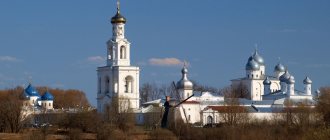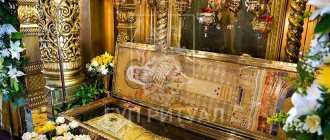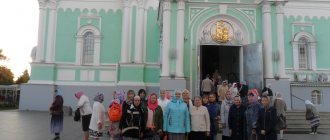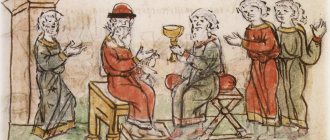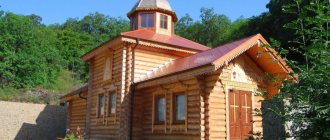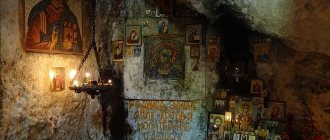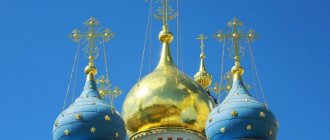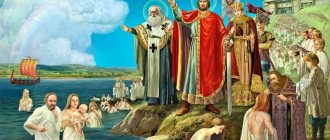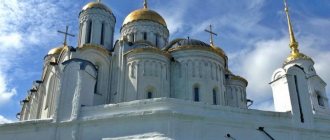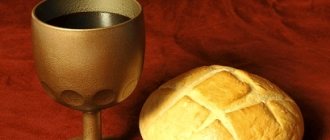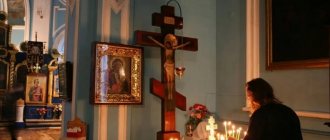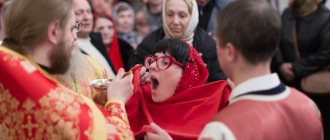Jerusalem and its history, as old as the Bible itself
Shrines of Jerusalem: where all pilgrims strive, but it will also be interesting for an atheist tourist
Actually, Jerusalem became the capital of Israel quite recently (in 1949), although the history of this ancient city goes back thousands of years.
It is known that Jerusalem was captured, destroyed and rebuilt many times. For example, in the 70s AD. During the suppression of the great Jewish revolt against the Romans, Jerusalem was completely reduced to ruins. In 132-135 AD. and the place itself was renamed. And only in 325, the Roman Emperor Constantine I returned the name Jerusalem to the city and ordered the construction of Christian holy places in the city, including the Church of the Holy Sepulcher (in 335).
Scientists believe that the most famous street of the holy city, Via Dolorosa, is nothing more than an attempt by medieval monks to revive the Bible. But people do not come here for historical truth. Although Jesus Christ did not walk the modern Via Dolorosa, Jerusalem is a treasure trove of cultural and historical information.
Jerusalem is called the city of three religions: Islam, Christianity and Judaism, since the sacred relics of three completely different faiths are kept in one city.
The holy place common to all three religions is the Temple Mount .
We invite you to take a short video walk through the center of Jerusalem.
Old Town and Stations of the Cross
Historically, since the beginning of the 19th century, the old city has been divided into four quarters: Christian, Muslim, Jewish and Armenian.
The main temple is located in the Christian Quarter - the Church of the Holy Sepulcher . The Way of the Cross, or the Road of Sorrow, ends here (Via Dolorosa street ,
Via Dolorosa
), which repeats the path of Christ to the place of execution on Calvary.
It is customary to make nine of the fourteen stops , plus another five on the territory of the Church of the Holy Sepulchre:
- 1. The place of questioning of Jesus by Pontius Pilate, the place of trial and sentencing.
- 2. Second place marked by the arch of Ecke Homo. Here, according to legend, Pilate brought Jesus out before the high priests, and pointing to Christ, said: “Behold a man.” This is the same place where Jesus took the Cross.
- 3. Place of the first fall.
The Fourth Station of Christ: Meeting with the Mother
- 4. Place of meeting of Christ with the Mother.
- 5. The place where Christ met Simon of Cyrene.
- 6. The place where Saint Veronica wiped the face of Christ with her veil.
- 7. Place of the second fall.
- 8. A meeting place with crying women.
- 9. Place of the third fall.
Square in front of the Church of the Holy Sepulcher
- 10. The place of the stripping of Christ’s clothing and its division.
- 11. Place of crucifixion on the Cross.
- 12. Place of death.
- 13. The place where Jesus was taken down from the Cross.
- 14. The location of Jesus Christ in the tomb.
The beginning of the Path of Sorrow is the Gate of the Virgin Mary, or the Lion's Gate. Through them Jesus entered the city on Palm Sunday. Here began his path to God's Glory through suffering.
Keep in mind: most of the “path” along Via Dolorosa is through the Arab quarter, which means that the road essentially goes through the market. And for traders, every passerby is a potential buyer. If possible, follow the path of Christ in the morning hours, then your path will be calmer and more peaceful.
Church of the Holy Sepulcher
The temple was built in 335, located on the site of the crucifixion, burial and resurrection of Jesus Christ. It is a center of Christian pilgrimage. It also houses shrines such as the Stone of Anointing, the Holy Sepulcher and Golgotha .
The temple belongs to SIX people at once! (Greek Orthodox, Catholic, Armenian, Coptic, Syriac and Ethiopian) denominations. The time of services is strictly distributed by days, hours and even minutes. This division has served and continues to serve as a cause of conflict, therefore, in order to relieve “tension” between faiths, the keys to the temple have been kept in the Arab-Muslim Judeh family since 638. And the right to unlock and lock the door belongs to another Muslim family - the Nuseibah. These rights have been passed down in both families from father to son for centuries. These families are very respected and known far beyond Israel.
Inside the Temple, opposite the entrance, lies the Stone of Anointing (also known as the Stone of Confirmation, the Stone of Anointing) - one of the main Christian shrines, and is the 13th station of the Way of the Cross. Objects touched by it are considered sanctified.
Church of the Holy Sepulcher. In the first photo, the Chapel of the Holy Sepulcher, or Edicule, is located to the left of the Stone of Anointing. On Holy Saturday the Holy Fire is lit in it.
Wall of Tears
In the Jewish Quarter, one of the main sacred monuments is the Western Wall, part of the stone wall around the Temple Mount of the Old City. Near the Wall it is always very noisy: millions of tourists specially go to Jerusalem to pray and leave a note between the stones with a request to the Almighty.
Also, the attention of tourists and pilgrims is invariably attracted by the ruins of the city from the time of Herod, located here.
Road to the Western Wall
Women's and men's territories are separated: men approach the Western Wall from the left, and women from the right.
Temple of the Burial of the Virgin Mary
While in Jerusalem, plan to visit the underground Church of the Virgin Mary in Gethsemane. The temple is owned simultaneously by the Jerusalem Greek Orthodox Patriarchate and the Armenian Church. According to sacred texts, the Virgin Mary was buried here and an unusual underground church was erected above her tomb - the Assumption of the Blessed Virgin Mary. The temple is considered Greek Orthodox, but other Christian denominations also have access to the church for worship.
The Temple of the Virgin Mary is located underground. The entrance to it is from the south; a wide stone staircase of 48 steps leads down from the entrance. Hundreds of fine handmade lamps hang from the ceiling.
David
In 1000 B.C. Israeli King David invaded Jerusalem and walled and fortified the city against further invasion. Later, when King Solomon built the temple, Jerusalem became the spiritual capital, first for Jews and then for Christians and Muslims.
In 586 BC. the city fell to the Babylonians, and Solomon's temple was destroyed by Nebuchadnezzar, but later rebuilt. Alexander the Great also captured all of Palestine in 332 BC, and in subsequent years Jerusalem was ruled by the descendants of his generals: the Egyptian Ptolemies and the Syrian Seleucids.
In the 1st century, the city was the capital of Simon Maccabee's Maccabean Empire, before giving way to long Roman rule.
During the Roman era, the city of Bethlehem near Jerusalem witnessed the birth of Jesus Christ.
Modern Jerusalem
Pilgrims and tourists travel to Jerusalem from all over the world: the largest number of tourists to Israel comes from the United States, and Russia takes second place in terms of tourist flow. Modern Jerusalem has grown far beyond the boundaries of the Old City. The New Town has many hotels to suit every taste, large shopping centers and authentic restaurants.
Eucalyptus Restaurant (near the old town, 14 Khativat Yerushalayim), where the charismatic chef Moshe Basson cooks. He even turns the usual serving of dishes into an exciting show! The cuisine is mostly traditional Israeli, with a special menu for vegans and kosher dishes. The chef enjoys communicating with visitors, walking from table to table, talking about the features of Israeli cuisine.
Crusades
In 1099 AD, Jerusalem was conquered by the Crusaders and its inhabitants were massacred (Muslims, Christians and Jews alike). For most of the 12th century, it became the capital of the Latin Kingdom of Jerusalem, a Crusader state.
In 1187, under the leadership of Saladin (Saladin), the Muslims recaptured the city and, much to the relief of the Christian inhabitants, there were no revenge killings. Those who wished to leave were allowed to do so with all their property and belongings, and those who wished to remain were guaranteed protection of their lives, property and places of worship.
After this, under the rule of the Mamluks and then the Ottoman Empire, Jerusalem was rebuilt and restored, especially by Suleiman II (also known as Suleiman the Magnificent), who built new walls, gates, towers and aqueducts for the city.
What to bring from Jerusalem
To pilgrims and believers:
Jerusalem candle
This is the customary name for a bunch of 33 candles - according to the number of years of the earthly life of Jesus Christ. It must be purchased in advance before visiting the Church of the Holy Sepulchre. Candles must be lit from the Holy Fire and extinguished there. After this, you can give a bunch of candles (only the whole, without dividing them) to your loved ones and they will always burn only with the Holy Fire.
Red thread
A talisman that has become popular quite recently, however, has already gained many fans. You should not buy them from street vendors, a huge number of which you will meet on the way to the Western Wall. They take them on the spot and only in exchange for donations.
For tourists:
Tahini, tahini or sesame paste
Sesame paste or tahina (tahina) is considered an indispensable component of oriental cuisine. You can buy it all over the city in regular stores. But believe me, you won't regret your time if you find an old tahini factory on the street next to Via Dolorosa, in the Old Town.
Tahini Factory and Itskah - its owner
The Al Jabrini family has owned the factory for more than 150 years, and in general it has been operating continuously for 2 centuries. Only traditional technologies are used in production: sesame seeds are ground on old basalt millstones. Itskakh is proud of its production. “On modern ones,” he says, “they use millstones made of a different stone, which quickly wears out. The stone particles fall into the tahini, and the heavier density stone precipitates the sesame paste pulp.” Therefore, he claims, his tahini, unlike that produced in modern factories, never separates. Its products can be stored for more than a year without refrigeration. The only secret is that nothing foreign should get into it, even droplets of water can ruin it.
You can dip pieces of meat, fresh vegetables or bread into tahini sauce. Without tahini, you won't get proper hummus.
Itzkakha tkhina factory
Classic white tahini is made from shelled sesame seeds.
Beige tahini - from unrefined.
Red tahini is rarely sold and is quite difficult to buy. When making it, sesame seeds are kept in the oven for at least 10 hours.
Black tahini is not made from sesame seeds, but from the katsa plant (Arabic for “seeds of blessing”). Muslims eat it a spoonful a day, exclusively for religious purposes.
You can also buy sesame halva and grape honey (juice that is boiled for 10 hours to a consistency similar to honey) at the factory.
Sesame kozinaki
A delicacy that will appeal to both children and adults. In addition, sesame kozinaki is considered one of the most useful, due to its rich composition of mineral and biologically beneficial substances.
Market in the Old City of Jerusalem
Sesame oil
Sesame oil is good for frying and can be heated up to 400 degrees and stored for up to 5 years.
Halva
Israeli halva tastes more delicate than Russian halva. It is prepared in olive oil. The choice is huge: halva without sugar, with nuts, vanilla, cocoa, etc.
Spices
In Israel, as throughout the Mediterranean, spices are used very actively. Most often you will hear about adding hyssop to a dish. Don’t be surprised, this is not our traditional medicinal hyssop, which grows in many people’s dachas. This is Syrian oregano (Origanum siriacum, Origanum Maru), sometimes (erroneously) it continues to be called Syrian marjoram (Majorana syriaca), and the name za'atar is also used.
Spice shop in old Jerusalem
Market in old Jerusalem
Old City in Jerusalem
Jerusalem icons
There are a large number of icons of Saints in Israel. Each of them has a specific meaning and interpretation. Christians from all over the world come there to venerate and pray with them. You can also ask the priests which image would be best to purchase and buy it there in church shops.
Among the icons of the Saints of Jerusalem, the icon of the Mother of God of Bethlehem deserves special respect. It is located in the Basilica of the Nativity. She is revered not only by Christians, but also by other believers. It is customary to ask her for the gift of children, for their well-being and for the well-being of the family. You can also contact us in any need and other life circumstances. She never leaves in trouble, she becomes a Diligent Intercessor, Joy and Consolation of all people.
Remember that if possible, be sure to visit the Holy Land. This impression will remain with you for the rest of your life.
The Lord is always with you!
One thought on “Holy places in Israel for Orthodox Christians”
- poteryahina
September 26, 2017Reply Good afternoon! The article is generally good. There is one significant BUT! Forgive me, but here you are citing some conspiracies that have nothing to do with the prayers left to us by the holy fathers of the church. No worries. This is Blasphemy, sorry. If there is a specific source where these, by the way, spells were taken from, please indicate the source. And please forgive me for my mistrust.
